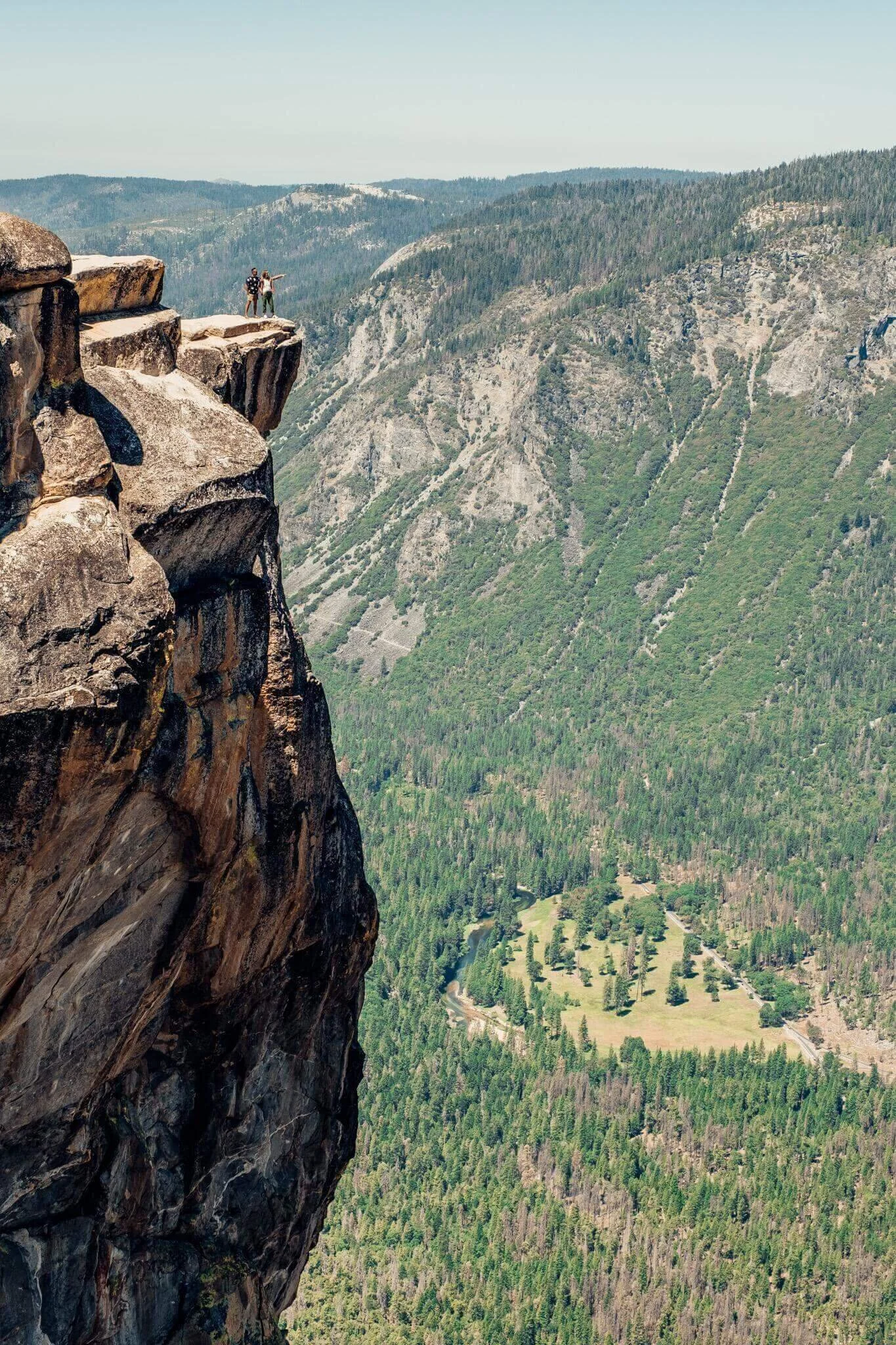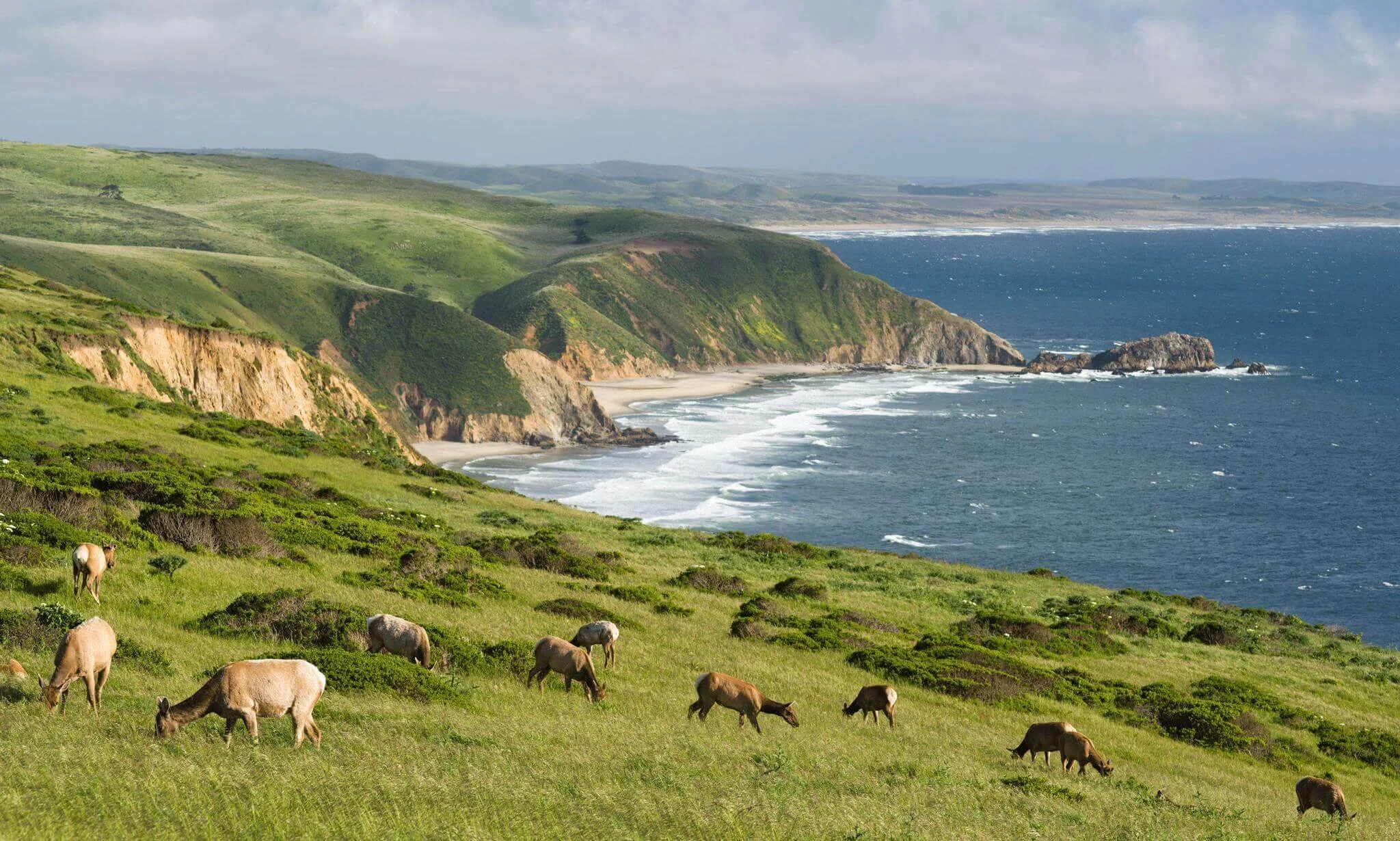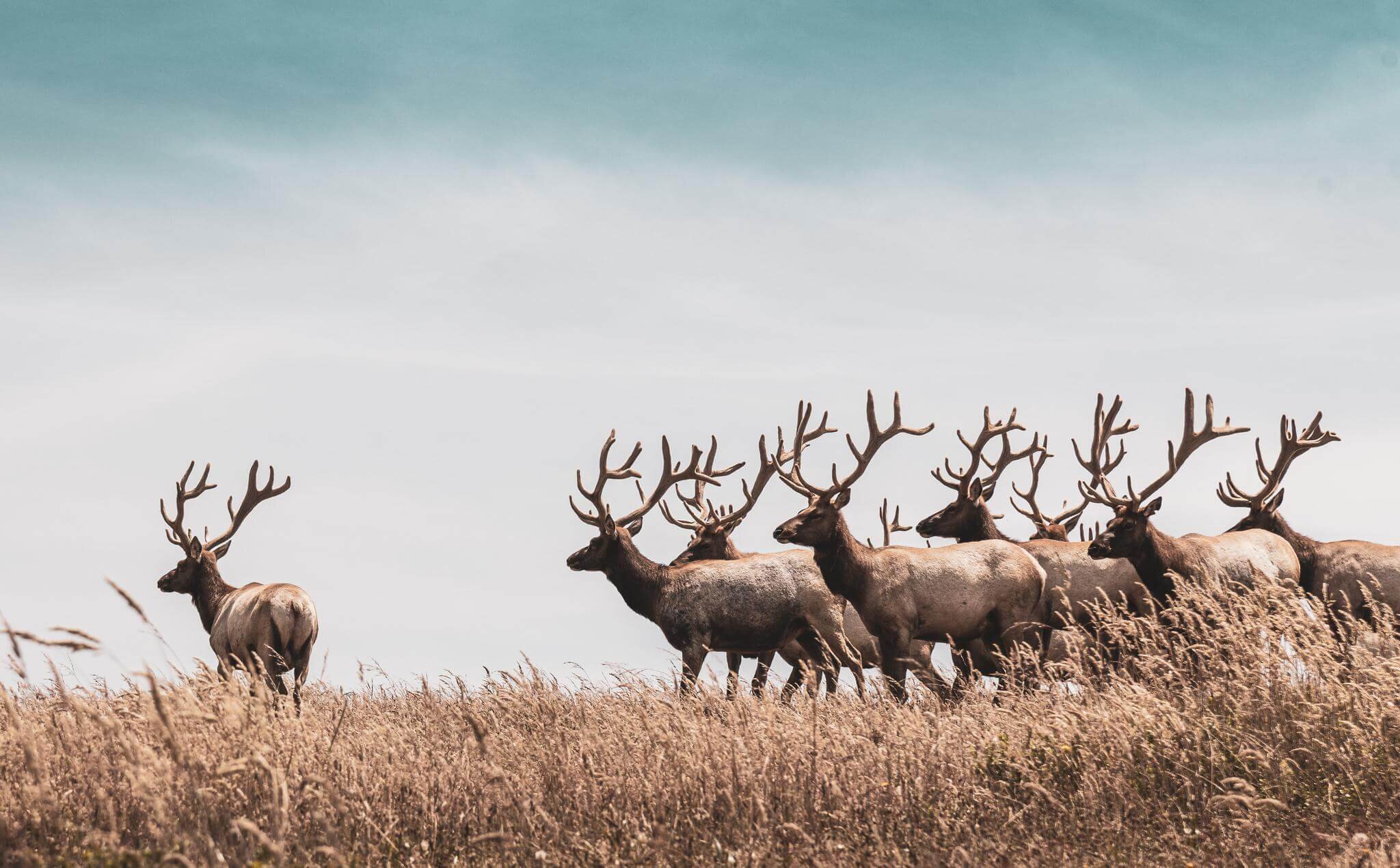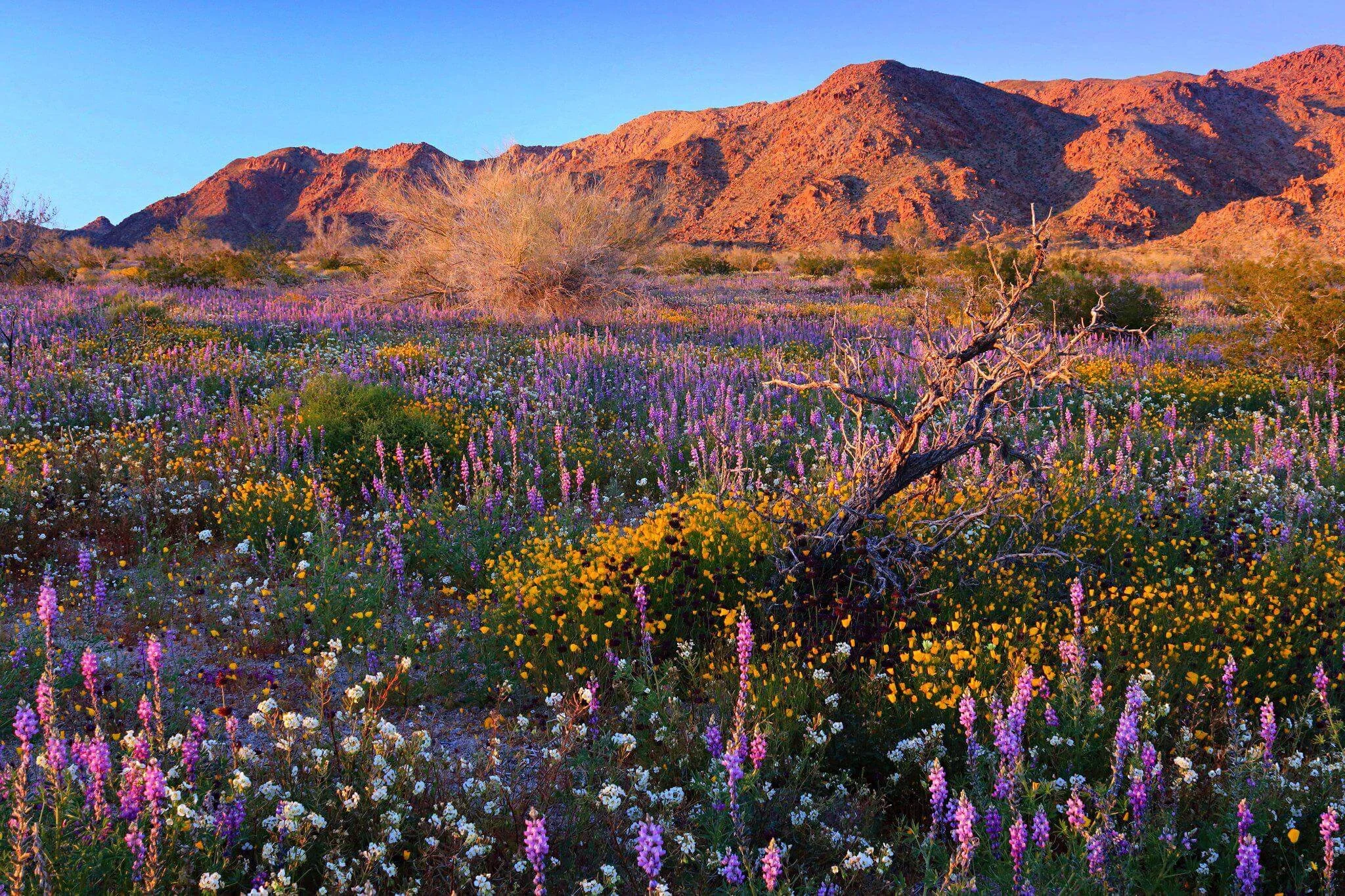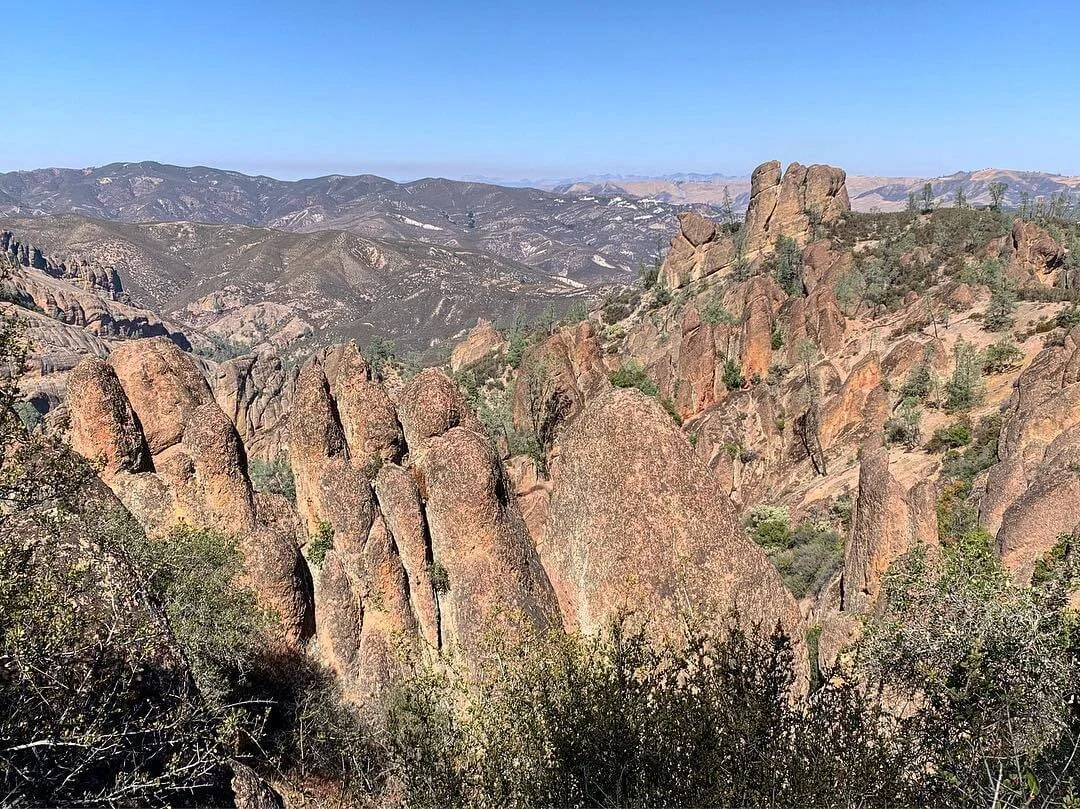Best National Parks - California
California is home to some of the best and most diverse collections of national parks in the USA! The diversity is stunning: volcanic landscapes, towering sand dunes, the lowest point in North America, lush forests full of giant trees, white sand beaches, and geological marvels.
Spoiled for choice on what to do, here’s a great breakdown of all the best national parks in California and why to visit each of them:
Table of Contents
Death Valley National Park
Artist’s Palette
While the name might sound foreboding, Death Valley National Park is actually one of the most amazing parks in America due to its wild, otherworldly landscapes.
Most of the year, it’s brutally hot - but if you swing by in the spring or late fall you can avoid most of the scorching temperatures.
Highlights:
Artist’s Palette - this colorful section of the Black Mountains features a striking collection of pink, orange, green, brown, and turquoise hillsides that are best seen in the afternoon
Mesquite Flat Sand Dunes - these towering sand dunes seem to go on forever and are perfect for photoshoots
Badwater Basin - the lowest point in the USA at 277 feet below sea level, this salt flat seems to stretch out forever and is amazing for photography.
Racetrack Playa - If you have a four-wheel drive, you can visit this interesting mud bed that has mysterious rocks with trails behind them.
Zabriskie Point - One of the most picturesque spots in all of Death Valley, this layered, pastel landscape is a must-see when visiting.
Yosemite National Park
Taft Point
One of the most famous parks in the world, Yosemite National Park was photographer Ansel Adams’ favorite subject due to its sheer beauty, thundering waterfalls, and boundless adventure opportunities. It’s also the subject of the thrilling rock climbing film Free Solo, one of the best travel documentaries of all time.
Yosemite is a year-round destination for hiking, rafting, fishing, rock climbing, camping, and wildlife watching with spring and fall being the best times to visit.
Spring is especially beautiful with the waterfalls in full force while fall has more reasonable temperatures and fewer crowds.
Summer is the most popular time which leads to sometimes overcrowded trails. But Yosemite is large enough that you can still find solitude if you want.
Winter is a quiet, snowy respite where you can find interesting landscapes that most people never see. Many roads and trails are closed though, so you’ll need to be creative and plan ahead if you visit during Winter.
See the best of Yosemite with this guided tour:
Highlights:
Yosemite Falls Trail - Yosemite Falls is one of the most iconic things in the park. You’ll be able to see it from all sorts of viewpoints when the falls are in full force. But to see it up and close and personal, the slightly strenuous hike up to the top of Yosemite Falls Trail is worth it!
Taft Point & Sentinel Dome - One of the ‘best bang for the buck’ hikes in all of Yosemite - you’ll be able to see so many stunning viewpoints on this one
Tenaya Lake - A peaceful respite and a must if you plan on visiting Yosemite High Country
Firefall, which happens only for a couple weeks in the springtime
Vernal & Nevada Falls - You can see both of these famous falls on one hike. Vernal sits below Nevada Falls and is worth the 7+ mile round trip hike. Bring grippy shoes as the stairs upwards are somewhat slippery at times from the constant mist from the waterfalls.
Half Dome - When people think of Yosemite they usually think of Half Dome. You can see it from many places inside the park and if you’re up for it, you can hike up to the top.
Point Reyes National Seashore
Just one hour north of San Francisco, this 100 square mile protected seashore area is full of windswept beaches, grasslands, rocky seaside bluffs, forests, estuaries, and lots of wildlife.
Some examples of wildlife that you’ll see at different times of the year in Point Reyes:
Elk in Point Reyes
January - April: Grey Whales
December - March: Elephant Seals
March - June: Harbor Seals Pups
July - October: Tule Elk Mating
Highlights:
Point Reyes Lighthouse - This historic lighthouse is beautiful and offers 360-degree views of the Pacific Ocean.
Cypress Tree Tunnel - This natural tree tunnel offers some great photo opportunities. I’ve written a guide for the Cypress Tree Tunnel here.
Point Reyes Shipwreck - This abandoned shipwreck has been marooned here for some time and is a photographer’s delight!
Tomales Point Trail - One of the most spectacular hikes in the area, plan for at least half a day or more to hike the whole thing. The payoff at the end is worth it!
Drakes Beach - Perfect for a day of relaxation - make sure to grab some cheese and wine at Point Reyes Station!
Cowgirl Creamery - a famous cheese shop in Point Reyes Station with excellent varieties all made from local ingredients
Hog Island - you can’t mention oysters in the Bay Area without talking about Hog Island!
Joshua Tree National Park
One of the most magical places on the West Coast, the park’s Joshua Trees were named by Mormons who thought the interesting trees resembled the arms of Joshua pointing to the promised land.
Over the years, the park has become a haven for all sorts of explorers, adventurers, and soul searchers.
They are drawn to the magical beauty of the landscape at sunset, sunrise, and at night when the stars are clearly visible with the lack of light pollution.
In fact, Joshua Tree is designated as an International Dark Sky Park due to the sheer amount of stars in the night sky visible to the unaided human eye. If you visit, make sure to camp a couple of nights so you can experience what our ancestors experienced when they looked up to the heavens.
You can spend anywhere from a couple of days in Joshua Tree to a week here, depending on your interests!
Highlights:
Hidden Valley Nature Trail - an easy one-mile loop with tons of Joshua Trees and other interesting things
Integatron Sound Bath - take in a soothing sound bath in this unusual structure
Camping (Hidden Valley or Jumbo Rocks) - nothing beats camping in Joshua Tree and gazing up at the brilliant night sky
Cholla Cactus Garden - thousands of cholla cactus everywhere!
Rock Climbing / Bouldering - a rock climbing mecca, it’s a great place for all levels
Spring Wildflowers - desert wildflowers abound in the springtime
Channel Islands
Called the ‘Galapagos of North America’ the Channel Islands are a collection of islands with more than 2000 species of plants and 145 unique animals. It’s hard to find such untouched beauty anywhere in the world!
You can either get here by boat (one to three hours) or plane (half-hour) with most departing from Ventura Harbor.
Make sure to rent a kayak to explore the islands, caves, and sea life everywhere.
You can even stay at one of the campgrounds on selected islands to see the unmatched starry night sky.
For more information on the islands:
Lassen Volcanic National Park
One of the most underrated National Parks - Lassen Volcanic National Park is full of geysers, mud springs, and hydrothermal features just like its more famous cousin Yellowstone.
It’s also a great park to visit if you prefer fewer crowds and just as much pizzazz as the more popular parks in California.
As the name suggests, there are plenty of active volcanoes in the area as well as Lassen Peak, which erupted in 1914.
Highlights:
Bumpass Hell - one of eight hydrothermal areas in the park, it’s full of bubbling mud pots, steaming pools, and general weirdness
Bubbling Mud Pots - you’ll see these all over the park!
Chaos Jumbles - Formed by multiple volcanic landscapes hundreds of years ago, they are a sight to behold
Manzanita Lake - one of the most beautiful parts of Lassen, you can bike, kayak, or swim in the lake
Sequoia and Kings Canyon National Parks
Located as part of the famous Sierra Nevada Mountain range - Sequoia and Kings Canyon are two national parks located right next to each other. They are famous for their large sequoia trees and seemingly unlimited trails without the crowds.
While they aren’t quite as popular as Yosemite or Joshua Tree, they are right up there in terms of sheer beauty and awesome wilderness.
The parks are open all year round and depending on what you want to see and what kind of vehicle you have, you really can go anytime you want. Even in the summers, when Yosemite is overflowing with visitors, you can swing by Sequoia and Kings Canyon and snag hotel rooms or camping spots without any problems.
Highlights:
Kings Canyon Scenic Byway - This 50 mile drive showcases the beauty of the area through many twists and turns.
General Sherman Tree - The worlds largest tree, standing at 275 feet tall and 36 feet wide in diameter.
Giant Forest - This amazing sequoia grove is home to more than 8,000 of the tower giants
Moro Rock - The view at the top is the payoff.
Tunnel Log - Drive through a fallen tree!
Hiking ideas for Kings Canyon and Sequoia
Devils Postpile National Monument
One of nature’s most amazing displays of art, the basalt column at Devil’s Postpile in Mammoth Lake is a sight to see. You can see similar geological features like this all over the world like the Giants Causeway in Ireland or the Black Sand Beach near Vik, Iceland.
How are these basalt columns formed? They were formed by lava that cooled at a uniform rate, which split into columns over time.
Devil’s Postpile is usually open from mid-June through mid-October. During the summer months, a shuttle bus is required to get to the monument. Otherwise, there is a parking lot at the monument which fills rather quickly - get there early in the morning to get a parking spot.
Where to stay:
Pinnacles National Park
One of California’s newest national parks, Pinnacles is what remains from an ancient volcano field that was slowly moved over millions of years by plate tectonics. Over the years the interesting rock formations were molded and exposed by the elements to what we see today.
As it’s one of the lesser-known national parks in California, if you prefer trails with fewer people, this is a great park. It’s also a small national park in comparison to the massive ones like Yosemite, so the park is quite easy to navigate around.
Things to note: Spring or Fall are the best times to visit as summertime temperatures can get quite hot There are two park entrances on the west and east side, but the entrances do not connect via road.
Highlights:
Bear Gulch Reservoir
High Peaks Trail
California Condor Bird Watching
Moses Spring Trail
Talus Caves
Where to stay:




